Science For The Little Guys: Bubbling Paint
I really am so grateful that I get to spend quality time with my son every day. In this fast-paced world we live in parents often have to spend exhausting hours at work to make sure the bills are paid, leaving them little time with their children. So while the school holidays can be tricky (it's not easy entertaining a three-year-old) I really do appreciate and enjoy simply being at home with my child and making the most of our home and family environment. Today for instance, we got to do some more science and art together, while bonding and enjoying the great outdoors.
Today's fun activity:
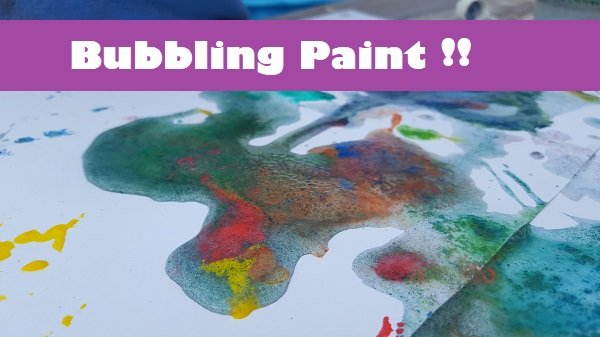
Painting With Baking Soda And Vinegar (Bubble Paint)
My cupboards are quite bear at the moment (thanks to the low price of Steem) and I didn't feel like gallivanting to the shops, so we had to make do with what we had and rustle up our own science fun. I always have tons of baking soda and vinegar (must-have science ingredients) and I also found some poster paint that I hadn't opened yet. I mixed some baking soda into the paint and then poured vinegar into a small cup, with a medicine dropper.
The idea was to paint using the poster paint and baking soda mixture, and drop vinegar on to spots so that it would bubble and rise. And bubble and rise it did!
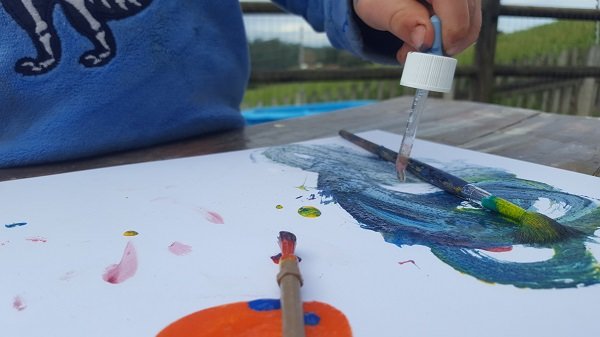
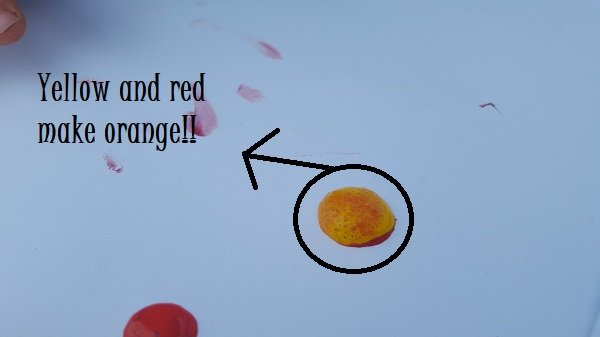
We even put one blob of paint on top of another (two different colours) and then added a drop of vinegar, so that the bubbles would mix the colours together and make a new colour. In the image above you can see we used red and yellow to make orange!
Apart from this being an "introduction to science" type of activity, it was also a creative one. We also got to stimulate our senses. We felt the cool gooey paint on our fingers and felt (and heard) the bubbles fizz. We smelt the sour vinegar, tasted its overpowering taste and the end result - we got to look at our beautiful final artwork pieces!
If you would like to do this activity at home with your kids (of all ages), or maybe you'd like to do it with your students at school. You will need the following basic ingredients:
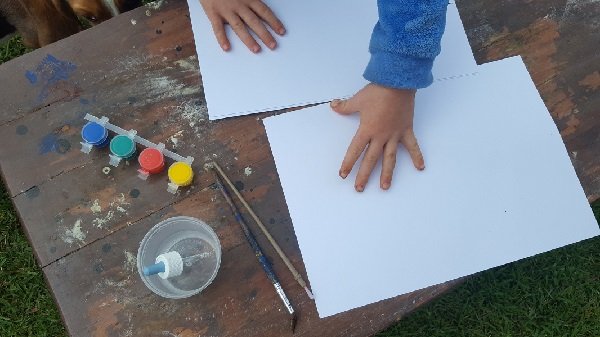
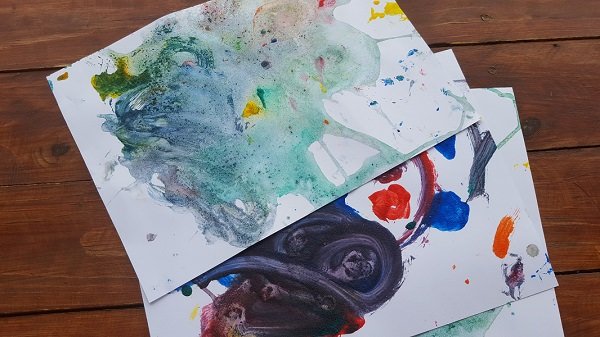
THE SCIENCE BIT
When baking soda is mixed with vinegar, a reaction takes place. The two chemicals, acetic acid and sodium bicarbonate, do not mix with each other; therefore, causing a reaction. When the two chemicals are mixed, a new chemical is formed called carbonic acid. - https://www.village-bakery.com/makes-baking-soda-vinegar-react/
When that paint dries it leaves a bumpy and granular texture to the artwork, kind of sparkles in the sun too! I also loved how the chemical reaction mixed the colours and swirled them together. We will definitely be doing this activity again, it was a hit!
Much love - @sweetpea


Very interesting and cognitive experiment. It is necessary to try in this technique to do a couple of works ... with daughter!))
Great post @sweetpea, thank you for sharing!